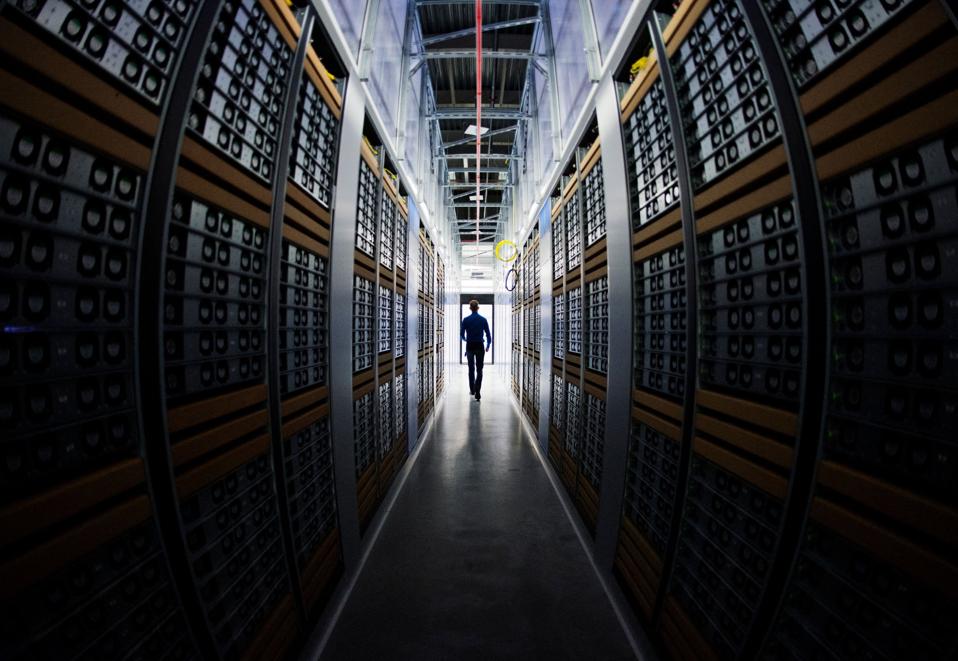Artificial intelligence has emerged as the predominant topic on Wall Street in the past year, with investors eagerly awaiting its transformative impact. Jamie Dimon, CEO of JPMorgan Chase, recently likened the forthcoming AI revolution to historical game-changers like the printing press, the steam engine, electricity, computing, and the Internet in his latest annual letter.1 As we delve into AI’s capabilities, we’ve marveled at its capacity to produce feature-length movies, identify previously undetected medical conditions in brain scans, and autonomously create music and art—an awe-inspiring development that echoes the realms of science fiction.
At the heart of the AI revolution lies a crucial physical requirement: computing power. Major semiconductor manufacturers such as Nvidia are experiencing an unprecedented surge in demand for their products as Big Tech firms aggressively pursue dominance in processing capabilities. These industry giants have publicly committed to investing up to $200 billion annually in capital expenditures on processors and data centers by 2025, according to reports from the Wall Street Journal’s MarketWatch.2
Data centers play a crucial role in converting power from the electrical grid and computing capacity from chip and hardware manufacturers into the AI capabilities showcased by platforms like ChatGPT, DALL-E, and Claude, among others. However, a pressing concern looms for computing giants: where will the grid source the power required to sustain the expected AI boom? Each new data center demands approximately 100 megawatts of power annually, equivalent to the energy consumption of 80,000 domestic households, according to estimates from the US Department of Energy.3
The solution lies beneath the earth’s surface, particularly in regions like the Haynesville basin spanning East Texas and Louisiana: good old American natural gas. Following the beginning of the war in Ukraine, domestic natural gas prices soared to a peak of over $9 per thousand cubic feet (MCF). Speculators accurately predicted that Europe would pivot towards diversifying its energy sources away from Russian natural gas, leading to increased efforts to import liquefied natural gas (LNG) from the United States. However, fast forward to today: after two years of unusually warm winters, the price of natural gas has plummeted to under $2 per MCF. In my assessment of energy prices, this equates to a crude oil price equivalent of roughly $15 per barrel. This stands in stark contrast to the present spot price of crude oil, which hovers around $85.
The International Energy Agency (IEA) reported that in 2022, data centers globally consumed 460 terawatt-hours (TWh) of energy.4 To provide context, Germany’s total annual consumption in 2022 was around 480 TWh.5 By 2026, the IEA estimates this figure could double to 1000 terawatt-hours. While renewable energy sources have made strides, gas-fired generation remains crucial to the power grid’s stability and the US continues to face mounting demand for base load power supply. The US Energy Information Administration projects the commissioning of 20 new gas-fired power plants between 2024 and 2025.6 However, this may not be adequate to meet the surging demand from AI, not to mention electric vehicles. According to Thunder Said Energy, by 2030, power consumption for AI data centers just in the US could skyrocket to 400 terawatt-hours annually, equivalent to approximately 1.3 trillion cubic feet of gas per year or 3.6 billion cubic feet per day. To contextualize, in 2023, the United States produced 104 billion cubic feet of natural gas per day. Meeting this escalating demand is likely to necessitate increased drilling activity across the country.7
In my view, natural gas stands out as the most cost-effective and reliable alternative to coal for power generation. This is because nuclear energy projects often entail lengthy lead times, and renewables still heavily depend on government subsidies. However, the challenge lies in transporting natural gas: and capital expenditures by pipeline companies have stagnated. This stagnation is primarily due to the increasingly politicized nature of pipeline construction, deterring companies from taking on associated risks. Consequently, upstream gas companies struggle to transport their product away from the wellhead. With an abundance of supply, it’s no surprise that tech firms are considering locating their data centers closer to gas plants to access affordable gas and decrease computation costs. For instance, Blackstone’s QTS subsidiary, a major data center construction firm, plans to build a $220 million facility in Fort Worth, Texas, tapping into the state’s power grid.8 Moreover, companies like Crusoe are innovating by developing technology to utilize excess natural gas typically flared at oil well pads. By building modular data centers directly on these sites in locations such as North Dakota, where vast quantities of gas are flared daily, they’re not only reducing waste but also capitalizing on a cost-effective energy source.
I believe American natural gas is poised to experience a 10-year surge in demand, driven in part by the computing requirements of AI. To leverage this trend, explore opportunities in pipelines boasting robust assets, upstream gas companies, and entities positioned to gain from the expansion of US LNG capacity. What’s more enticing, current prices present around an 80% discount from two years ago—unlocking unparalleled growth potential driven by AI at an unbeatable value.

